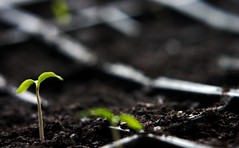 Tomatoes are being pulled from restaurants and markets across the U.S. after an outbreak of salmonella tied to crops originating in Florida and Mexico sickened about 170 people across the country. The FDA considers this trend of outbreaks "ongoing", and adopted a program a couple of years ago to address the outbreaks of salmonella. From the program's statement:
Tomatoes are being pulled from restaurants and markets across the U.S. after an outbreak of salmonella tied to crops originating in Florida and Mexico sickened about 170 people across the country. The FDA considers this trend of outbreaks "ongoing", and adopted a program a couple of years ago to address the outbreaks of salmonella. From the program's statement:Most tomato-associated outbreaks over the past ten years have been traced to product originating from the Eastern shore of Virginia and from Florida; however outbreaks have also been traced to Georgia, South Carolina, Ohio, and California.
This was June of last year. The program is ongoing, according to the FDA.
I've been trying to find some good information about how salmonella contaminates plants, specifically tomato plants. Some poking about through a few search engines found this report from the NIH detailing how salmonella is transferred to plants via soil contamination. Highly interesting reading, especially if you've assumed (as I had) that people had failed to rinse their veggies and had likely consumed a fertilizer product (animal poop.) A few relevant bullet points:
- Tomatoes are the most common veggie carrier of salmonella.
- Salmonella will outlive a six week crop rotation (lives in plant debris after being plowed under), and can propagate with the next crop generation.
- Salmonella can also contaminate carrots, radish, lettuce and parsley
- Salmonella is not deterred if the plant is diseased
- Most likely route of contamination is untreated water via soil. - see update below!
Photo by Pete Lewis.
UPDATE #1: This study by Dr. Mansel Griffiths, Dept. of Food Science, UofG suggests that salmonella cannot contaminate a plant if introduced via irrigation- It *has* be introduced on the flowers.
Human pathogens introduced through irrigation water (drip irrigation) at the flowering stage of tomato and cucumber plants did not contaminate the subsequent fruits, though they persist on the roots of these plants. However, when E. coli O157:H7, Salmonella and Listeria monocytogenes were introduced onto the flowers of cucumber, tomato and strawberries the subsequent fruits were contaminated.To paraphrase, contaminated soil got on the flowers. Exactly how that occurred is anyone's guess.
No comments:
Post a Comment